Suddenly, on the unadorned and barren wall, a great Gothic door opens. Its dark stones are carved with geometric symbols and patterns whose meanings and purposes I still, to this day, do not understand. What startled me most, the moment I saw it, was its peculiar nature: the archway did not open into another room, as I would have expected, but into a dark forest—dense, shrouded in what I soon discovered to be a perpetual night. Here, the sun, as far as I could tell, never rises.
At first, I thought it was simply a garden where nature had overrun the space after centuries of neglect. But no—the cold wind, gently caressing the leaves like a breeze, made them rustle with a sound that carried the scent of undergrowth: musky, almost feral. Something savage and ancestral.
A narrow path zigzagged deep into this rotting forest, fading into the heart of its darkness. Someone had walked it. That was clear from the bare footprints still visible in the earth. Dark, ancient—they looked like the fossilised tracks of long-lost creatures, the kind you might see in a museum or archaeological park. So old, yet so sharply defined. Whose footprints were they? And why are they still here, like the remnants of a journey frozen in time?
I followed the trail with my eyes, and only then did I notice the rocks emerging from the dense vegetation. They were looking at me with ancient eyes. At first, I thought the stones had been carved in the shape of faces—spirits of nature, perhaps, or forgotten idols from some vanished age. But they blinked.
With the gentle and cold breeze, a voice was carried too—low as the trembling of the earth, deep as the roots of mountains. I had to focus all my attention, for it was so faint, almost imperceptible. And then, I recognised it. The voice was murmuring, again and again:
“Γνῶθι σεαυτόν” — Know yourself.
Know Yourself – The Oracle Within
Carved at the entrance of the Temple of Apollo at Delphi, this ancient Delphic maxim greeted those who came to consult the Oracle. But before a single prophecy was spoken, the temple itself offered the first—and perhaps the greatest—truth.
Know yourself is not a call to self-absorption, nor merely to introspection. It is a sacred invitation to inner awakening. Within the context of the Oracle, it meant that no divine answer could ever be understood without first understanding oneself. To know oneself is to explore the labyrinth of identity, belief, fear, longing—to recognise both your limitations and your divine spark.
Philosophers such as Socrates treated this maxim as the foundation of all wisdom. For him, self-knowledge was not only virtuous but essential for living ethically and truthfully. We cannot know others, the gods, or the universe unless we first come to know the mind that seeks to understand them.
In a world still searching for meaning, the message from Delphi remains as vital as ever: the greatest journey is inward, and the deepest truths are already inscribed in the soul of the seeker.
The Fool Within
As if in a trance, I stood there—my eyes empty, my breath shallow—gazing into the strange forest and listening to the voice repeating its ancient mantra. Only then did I realise whose room I stood at the threshold of: The Fool’s.
This was the beginning of everything. This was the path—the way. This was the leap into the unknown. To cross the threshold is to embrace life’s mystery, to open oneself to change and to flow beyond what is known. It is to leave behind all preconceptions, beliefs, and emotions—everything we think we are. To cross the threshold is to willingly lose oneself in order to be found anew.
This is the first step of the Fool’s journey.
The Fool as the Beginning of Meaning: An Introduction to the Journey
In the Tarot, The Fool is much more than the first card in the sequence—it is the spirit that animates the entire deck, the hidden thread that weaves the Major Arcana into a meaningful progression. Numbered zero, the Fool stands outside the usual order. This gives the card a unique role: not only does it initiate the journey, but it also transcends it. The Fool is both the starting point and the ever-present essence of the traveller—the seeker, the dreamer, the soul in search of purpose.
What makes The Fool so central is its narrative function. Without the Fool, the Tarot’s Major Arcana would be a collection of archetypes—powerful, but static. The Fool introduces movement. It is through the Fool’s eyes that we encounter The Magician, The High Priestess, The Lovers, Death, The Tower, The World—not as isolated images, but as moments in a profound process of transformation. The Fool is the traveller whose journey connects these stages, giving them shape, depth, and direction.
In mythological terms, the Fool is the archetype who triggers The Hero’s Journey. Like the hero of ancient tales, the Fool feels the call to adventure—an inner restlessness, a longing for meaning, or the mysterious push of fate. That first step into the unknown, taken without guarantee or certainty, is the defining moment of every life story. The Fool’s apparent naivety masks profound courage: the willingness to begin, not knowing where the road will lead.
Each card that follows in the Major Arcana represents a threshold, a lesson, a challenge. They depict the unfolding of human life, with its trials, temptations, insights, losses, and revelations. But without the Fool, there would be no motion through them—no journey, no transformation, no story to tell. The Fool is not simply a card; it is the one who walks the path. It is you, it is I, it is anyone who dares to ask: What is the purpose of my life? What am I here to learn, to become, to create?
To enter the Tarot, then, is to step into a mythic framework of growth. It is to see life not as a random sequence of events, but as a symbolic journey toward greater consciousness. And it all begins with the Fool—wide-eyed, empty-handed, heart open to the winds of destiny.
The Fool’s Journey and the Hero’s Path: Tarot as Mythic Transformation
The Tarot, especially in the structure of the Major Arcana, offers a symbolic map of personal growth and spiritual transformation. Known as The Fool’s Journey, this sequence of 22 archetypal cards—from The Fool to The World—mirrors the mythic pattern described by Joseph Campbell as The Hero’s Journey. Both narratives speak to the deep, universal structures that govern inner development and the search for meaning.
The Fool (card 0) begins the journey in innocence and wonder, unaware of the trials ahead. This is the call to adventure, the moment before the threshold is crossed. Like the hero of myth, the Fool steps into the unknown, compelled by a mysterious inner need or external catalyst. With each card, the Fool meets figures and forces—The Magician, The High Priestess, The Empress, and so on—who represent stages of learning, challenge, or awakening. These encounters echo the Hero’s mentors, allies, and trials found in every mythic cycle.
Midway, the Fool encounters Death, The Devil, and The Tower—crisis cards that shatter illusions and force transformation. These dark nights of the soul correspond to the abyss or ordeal in the Hero’s Journey: the place where the self dies and is reborn. Emerging from this symbolic death, the Fool begins integration, gaining cosmic perspective through The Star, The Moon, and The Sun.
Finally, in Judgement and The World, the Fool returns—not as a naïve wanderer, but as an awakened being who has gathered knowledge, healed wounds, and found inner harmony. Just as the Hero returns from the quest with the elixir to heal the community, the Fool completes the cycle transformed, only to begin again at a new level.
Thus, the Tarot is not merely a divinatory tool; it is a mythopoetic mirror of the human condition. By walking the Fool’s path, we participate in an ancient story—one that invites us to face the unknown, grow through trial, and come home to ourselves, again and again.
The Madman’s Path
Don’t call mad the one
who walks barefoot through thorns
with laughter in his chest.
He has seen a light behind the curtain
that reason could not reveal.
He left the palace of certainty
to dance in the tavern of stars
and get drunk on their mystery.
He carries no map,
no compass.
He does not know the path.
He follows only a scent,
a voice
whispering:
Come.(Andrea Aste)
The Forest: A Mystic Metaphor
From the moment I entered this most peculiar “room”, I couldn’t help but reflect on its nature, pondering the different elements I witnessed. The Fool revealed itself as a forest—magically nested within this strange and surreal Castle—and it became clear that this form was chosen for a reason. It is a metaphor for what we fear most: the unknown. The dark forest is the uncharted wilderness within ourselves—our shadow side, the hidden and often repressed aspects of human nature that we must confront if we truly wish to grow, to reach our full potential.
“Γνῶθι σεαυτόν” — Know yourself.
But there is another layer we must consider: the nature of the Fool itself. Who is the Fool?
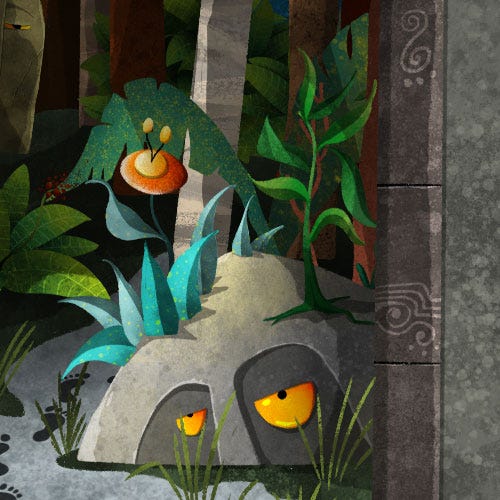
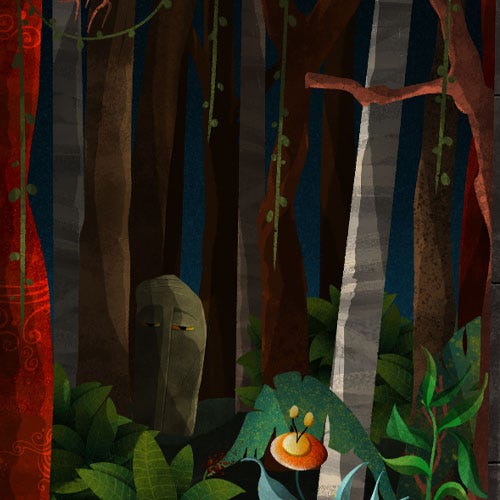
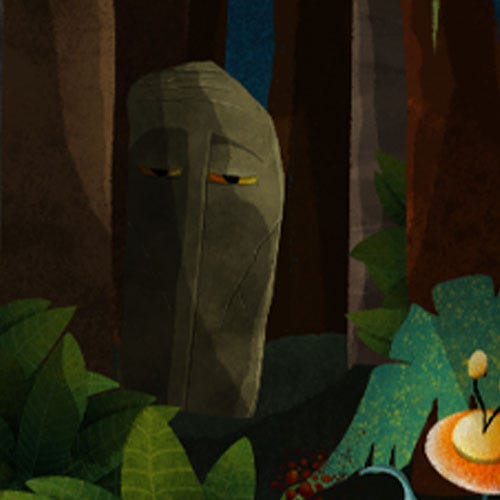
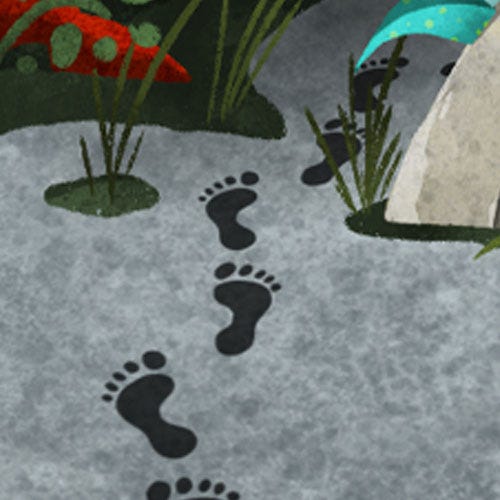
The Fool is the one who dares to step into this dark forest. The one who musters the courage to walk the mysterious path, even when others turn away. The Fool chooses to enter the heart of the unknown, driven not by certainty but by a call, a whisper from within. He is the one who thinks and acts differently from their tribe—from social groups, family, friends, and society at large. The Fool is struck by divine madness, touched by the vision that sees beyond the narrow horizon that limits others.
There is a thin line between being a fool and being a visionary, a genius, or a prophet. Society is governed by a delicate balance: on one side, the forces that drive innovation and transformation; on the other, those that cling to the status quo, to tradition and order. The Fool stands beyond this conflict. He embodies a different vision, and for this, he is often labelled as mad or marginalised.
When we become the Fool—when we decide to walk the path and cross into the forest—we do it alone. It becomes a solitary battle, not only against the misunderstanding and resistance of those around us, but against our own deepest fears. This is what makes the Fool a hero. He steps forward with a smile and a light foot, not because the way is easy, but because he knows it is the right thing to do.
There are still so many symbols yet to decipher—many layers of meaning waiting to be uncovered in this fascinating “room.” I drew everything I saw while I was there, exploring the Castle. I wrote down what I believe is its message—but I know what I captured is only a fragment, a partial decoding of a much more complex symbolic structure.
So I entrust this space to you now. I invite you to take what I have left untouched and unexplained—to delve into what I could not grasp—and continue the exploration of this chamber so rich with meaning.
don't be a scholar
be a fool for love instead
if you're the moon in the sky, fall down
become the dirt on the road
be together with young and old. good and bad
if you start out as a pawn
you'll become the king later on
(Rumi)
see you next time
Andrea

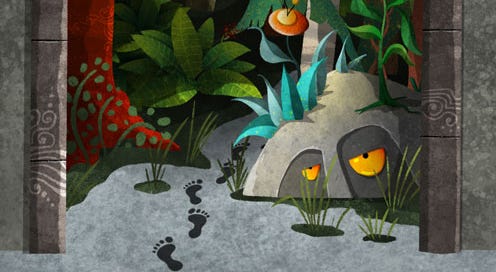



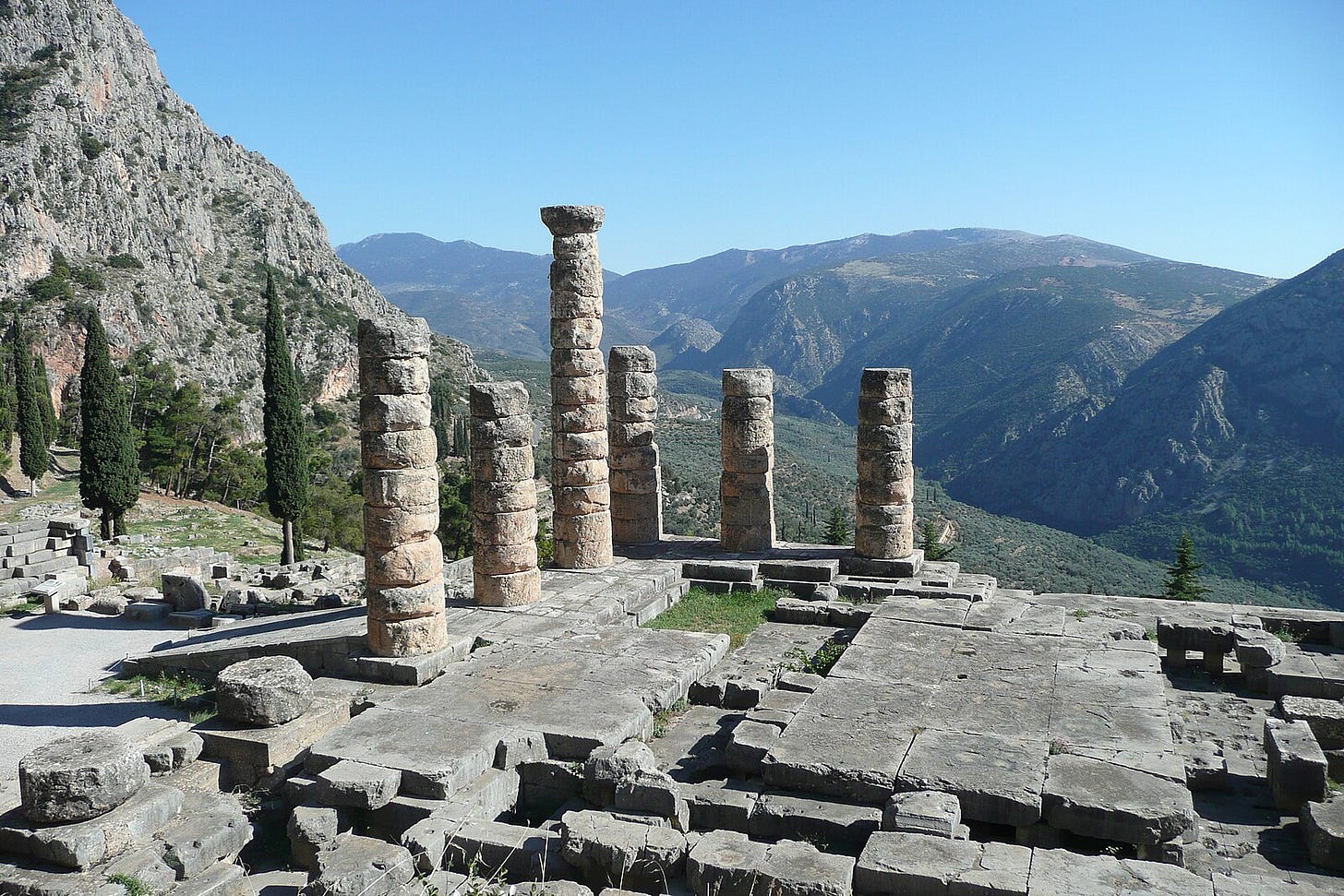

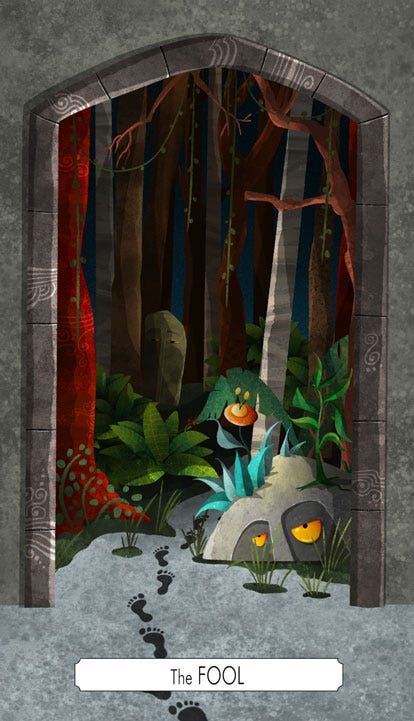
Know thyself - and enter into a path of mythic transformation. Thank you for this, Andrea!